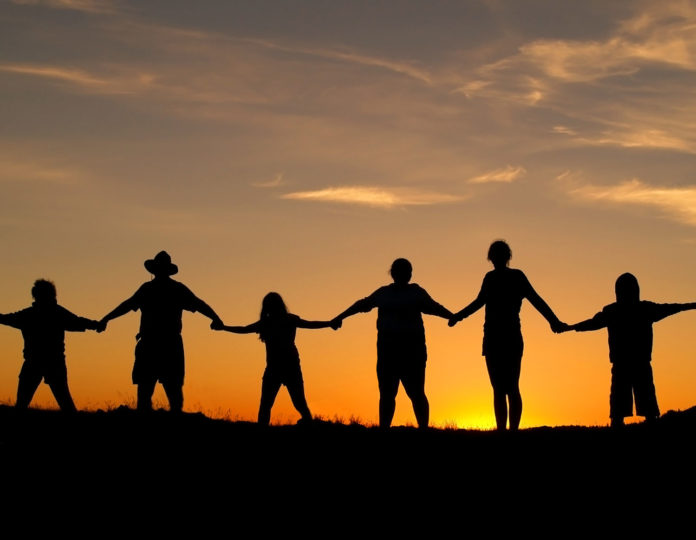When news broke Tuesday that a verdict had been reached in the murder case against Derek Chauvin, I — like many of you — braced myself.
Sitting in my North Mankato home (90 minutes from the Hennepin County Courthouse, which was surrounded by barricades, security fencing and National Guard soldiers) I wasn’t in any danger. There was no need to board up my windows. But like everyone else I feared the jury, like so many other juries, would find a blatantly guilty man “not guilty.” And if that happened … well, anyone who remembers last summer knows what would have happened. Buildings burned, businesses looted, people hurt in confrontations with police.
But, thankfully, the jury reached the proper verdict. And instead of chaos, mayhem and destruction, we saw elation and relief. Minnesota desperately needed this verdict. America desperately needed this verdict.
The verdict, and the collective sense of relief we all felt at the words “GUILTY, GUILTY, GUILTY,” are a start.
But this is far from over.
***
When I was a young journalist, I wanted to run. I wanted to chase the scoop. I drove recklessly to the scenes of building fires, rural homicides and the occasional “10-52” (the dispatch code for “accident with injury,” which we’d hear over the newsroom scanner just about every day).
During that time I got to know a lot of law enforcement officers — Mankato Police, Blue Earth and Nicollet county sheriff’s deputies, State Troopers, Bureau of Criminal Apprehension agents. And they got to know me, too. I remember a BCA agent sitting down at my lunch table in a Springfield diner the day after a murder happened in that small town. I was there to cover the story. He was there to find the killer. And he wanted to know what I knew.
… the standards for police officers here and everywhere else are remarkably low compared to other industrialized nations. So, conceivably, you could go get a two-year degree at Alexandria and finish up your training with eight weeks of skills.Carl Lafata
When you cover the police beat, you see them responding to calls, arresting people and doing things that keep the public safe, and in that respect I watched and met a lot of really good cops.
You also see other things when you cover that beat. Things that make you wonder. I’ll come back to this.
As Chauvin’s trial was wrapping up and everyone’s minds were on George Floyd, another tragedy occurred 10 miles away from the courthouse: Daunte Wright was shot and killed by a Brooklyn Center cop who thought she’d drawn her Taser.
It’s not just Minnesota. In Windsor, VA, Caron Nazario, a second lieutenant in the U.S. Army who was in his fatigues at the time of the incident, was pepper sprayed during an arrest. In that incident, the American flag patch on the right shoulder of his military uniform is visible in the officer’s body camera footage as Nazario was forced to the ground. He began to weep, repeating the words, “This is f***ed up.”
I could literally list a thousand such instances.
***
My point (and I’m not breaking any news here) is that something is seriously wrong with the way modern policing goes about the business of ensuring the public’s safety. And while I had a hunch, I asked Carl Lafata, a professor in Minnesota State University’s law enforcement program, what his thoughts were. He confirmed my hunch.
Essentially, Lafata says, the issue comes down to training and education.
“It speaks very clearly in many cases, to lack of training, lack of supervision, lack of accountability,” Lafata says, addressing the recent high-profile police shooting cases. “And the standards for police officers here and everywhere else are remarkably low compared to other industrialized nations. So, conceivably, you could go get a two-year degree at Alexandria and finish up your training with eight weeks of skills, and you can have the power to deprive people of their freedom or circumvent due process and kill them. It doesn’t seem like it’s commensurate with the level of responsibility. And yet this has been the predominant training and education standard throughout the United States.”
Lafata isn’t wrong. And Minnesota isn’t a state that sets the bar high for training. When students graduate with either a two- or four-year degree, in order to be a licensed peace officer in Minnesota they must complete an eight-week “skills” course. This is where officers learn firearm use, pursuit driving, basic investigative tactics, etc.
Eight weeks.
That’s it.
After eight weeks of learning how to be a police officer, a skills-course graduate could potentially be in a life-or-death situation. And we’re just OK with this?
I want to be clear here: The vast majority of peace officers I’ve dealt with have been great. But I’d be willing to bet they wouldn’t have turned down the opportunity to attend a more robust training program, such as the one they use in California, for example, where skills training is lengthier and more comprehensive.
***
There is one factor at play that doesn’t get much attention, Lafata says, particularly from seasoned veterans. The benefit of having a four-year degree instead of a two-year degree.
After the killing of George Floyd, MSU’s law enforcement program underwent an intense curriculum review. They wanted to make sure the education students received included a holistic view of public safety.
Henry Morris, MSU’s vice president for Diversity and Inclusion, recently told me, “Many of the students who go into our program come from homogeneous communities. And then we ask them to police in multicultural communities. Sometimes that’s a stretch. A lot of times the first interaction they may have with somebody different may be in a policing situation. So how do we give them that opportunity to interact with communities and hopefully see the people there as real people, not somebody to be afraid of. … White supremacy means your story is the only story. We want students in the program to know there are other stories out there. Your story is true for you. But it may not be true for everybody.”
MSU wants every law enforcement graduate to have — before they graduate — had the opportunity to work in communities where they interact with people of color, communities that are very different from where they grew up. This, they say, will expand students’ worldviews and give them much needed context and perspective when they’re carrying a gun on patrol and have the power to change someone’s life forever. MSU was already doing a lot of this, but their response to beef up the program even more in the wake of Floyd’s killing was a genuine and laudable move. I’m proud of my alma mater for making it.
So what if we made it mandatory for every law enforcement officer to obtain a college degree from an institution that values holistic education and strives to produce graduates that have had the opportunity to learn in diverse environments? Would that help?
Maybe. But that doesn’t do much for the officers already on a police force.
Lafata offers an interesting idea: remove the qualified immunity most officers have (which prevents them from being held accountable for actions taken in the line of duty) and replace it with a system similar to insurance.
“The vast majority of peace officers who want to do good are, of course, uncomfortable with all of this. They don’t like not having training and education and equipment,” he says. “But you know what? My wife works in the medical field; she has to have insurance. Attorneys have to have insurance. And if we are truly a profession, then maybe we need some sort of liability insurance. And if a guy like Chauvin, who has a [history of disciplinary actions] however many inches thick prior to his encounter with George Floyd, maybe he wouldn’t have been on the street because he couldn’t be insured and he couldn’t work.”
Education, training, accountability. I’m not saying it is a prescription for meaningful change in policing, but I am saying this is as good a place as any to start.
It’s already too late for so many.
Marvin David Scott III, Patrick Lynn Warren Sr., Vincent “Vinny” M. Belmonte, Angelo Quinto, Andre Maurice Hill, Casey Christopher Goodson Jr., Angelo “AJ” Crooms, Sincere Pierce, Marcellis Stinnette, Jonathan Dwayne Price, Dijon Durand Kizzee, Rayshard Brooks.
These are all unarmed Black people who have been shot by police since June in the U.S.
One successful prosecution of a bad cop — while it may be a much-needed salve in a time of unrest — isn’t going to solve anything.
But that prosecution combined with better training and education (education that addresses and examines racial inequities, implicit bias, socioeconomic differences, etc.) might start us down the road to meaningful change.




